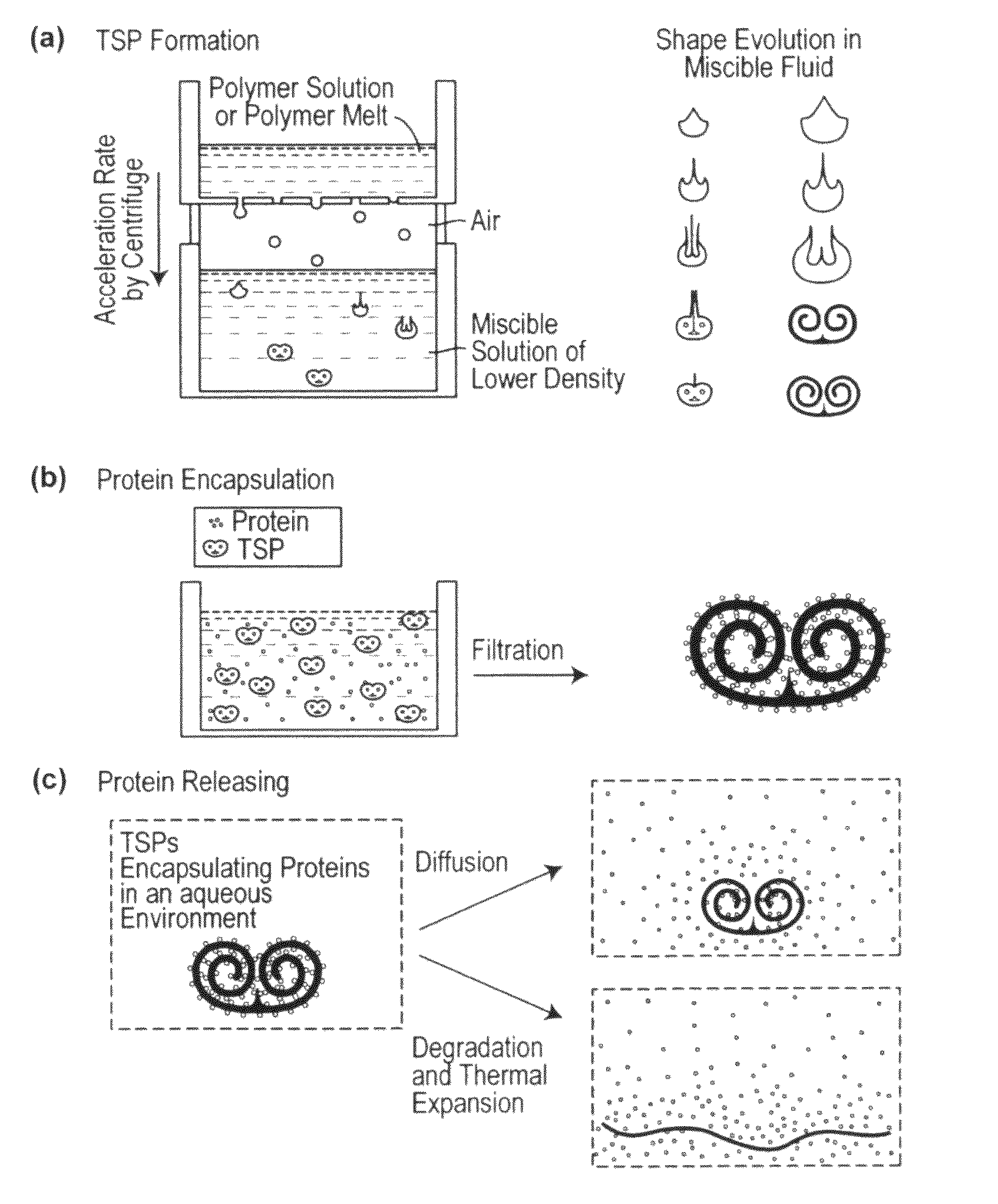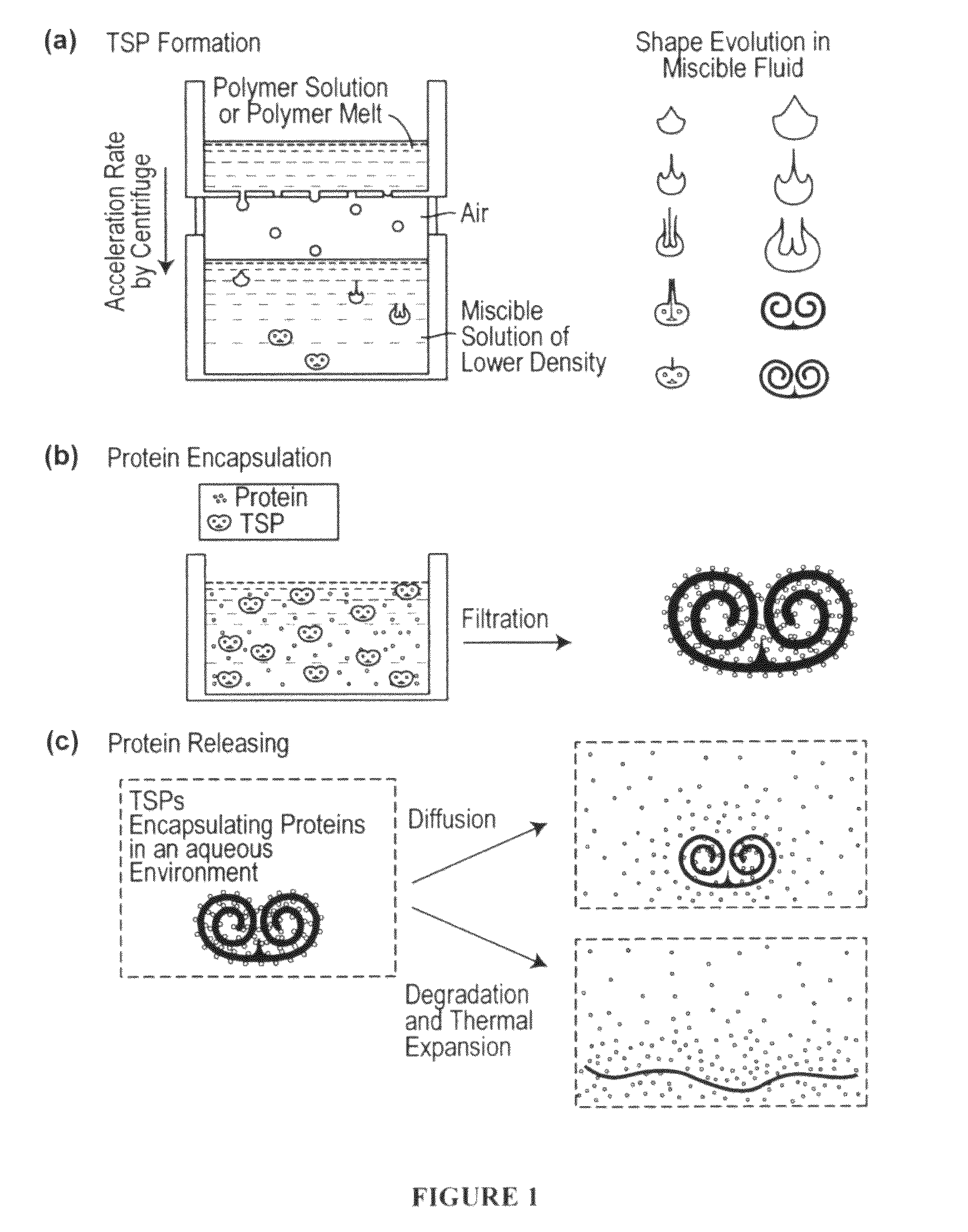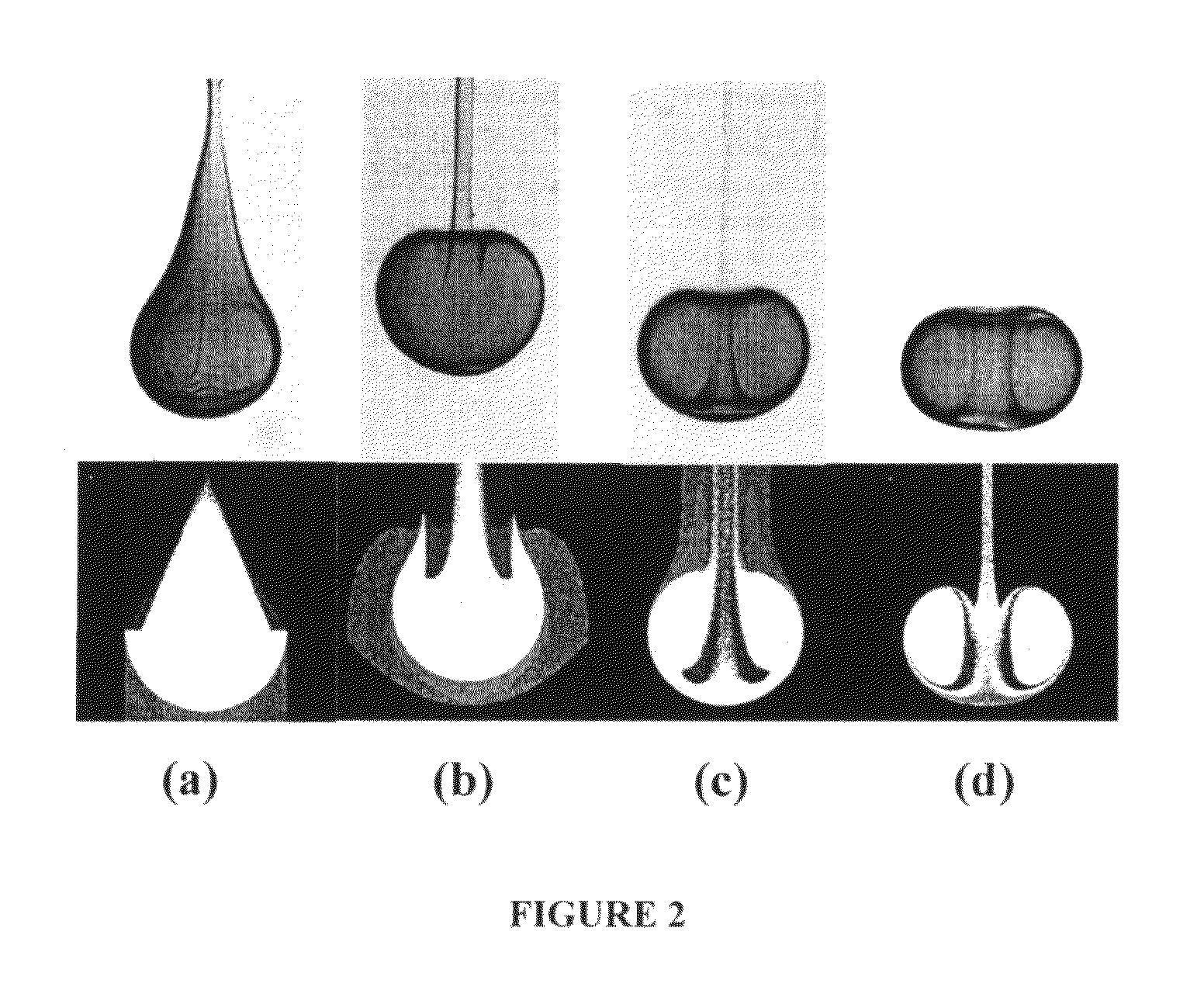Self-assembled toroidal-spiral particles and manufacture and uses thereof
a self-assembling, toroidal-spiral technology, applied in the direction of capsule delivery, peptide/protein ingredient, microcapsule delivery, etc., can solve the problems of difficult delivery of therapeutic proteins and peptides, few feasible methods of delivery, adverse side effects and immunogenicity, etc., to achieve slow diffusion, increase sedimentation force, and retain bioactivity and bioavailability
- Summary
- Abstract
- Description
- Claims
- Application Information
AI Technical Summary
Benefits of technology
Problems solved by technology
Method used
Image
Examples
examples
Materials and Reagents
[0224]IRGACURE® 2959 (2-hydroxy-1-[4-(2-hydroxyethoxy)phenyl]-2-methyl-1-propanone) (I-2959) is available from Ciba Specialty Chemicals (Basel, Switzerland). Poly(ethylene glycol) diacrylate (PEG-DA) (Mw 700), glycerol, and bovine serum albumin (BSA) were purchased from Sigma-Aldrich (St. Louis, Mo.). Micro BCA protein assay kit was purchased from Thermo Fisher Scientific (Rockford, Ill.). All chemicals were purchased at standard grades and used as received.
Toroidal-Spiral (TSP) Preparation
[0225]The photoinitiator (I-2959) was dissolved in ethanol at 25 wt %. PEG-DA (700) and the photoinitiator solution were mixed in a 4:1 volume ratio. Glycerol was mixed with ethanol and used as the bulk phase solution. Polymer drops (8.5 μL) were made by using a syringe pump (Harvard Apparatus, PHD 2000 programmable, Holliston, Mass.) with a flow rate of 85 μL / min. The drops fell from a flat tipped needle (Hamilton Company, 22G PS3, Reno, Nev.) held at a height above the bulk...
PUM
| Property | Measurement | Unit |
|---|---|---|
| Reynolds number | aaaaa | aaaaa |
| diameter | aaaaa | aaaaa |
| width | aaaaa | aaaaa |
Abstract
Description
Claims
Application Information
 Login to View More
Login to View More - R&D
- Intellectual Property
- Life Sciences
- Materials
- Tech Scout
- Unparalleled Data Quality
- Higher Quality Content
- 60% Fewer Hallucinations
Browse by: Latest US Patents, China's latest patents, Technical Efficacy Thesaurus, Application Domain, Technology Topic, Popular Technical Reports.
© 2025 PatSnap. All rights reserved.Legal|Privacy policy|Modern Slavery Act Transparency Statement|Sitemap|About US| Contact US: help@patsnap.com



